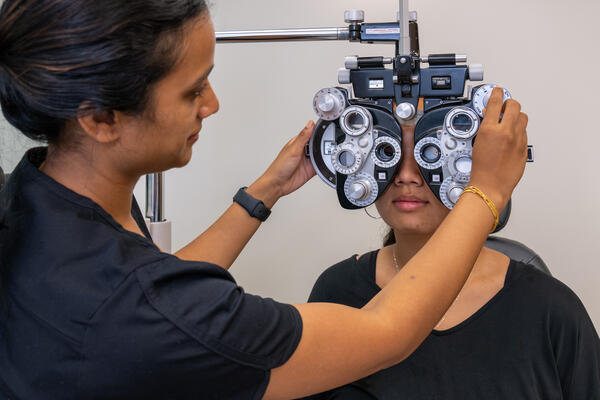Neurologist in Andalusia: Leading Specialists and Clinics Noted
Neurologist in Andalusia: Leading Specialists and Clinics Noted
Blog Article
The Pros and Disadvantages of Different Refractive Surgical Treatments for Enhanced Eyecare

LASIK Surgery
LASIK surgery is a generally done refractive procedure that aims to fix vision problems such as farsightedness, nearsightedness, and astigmatism. This medical method has actually gained popularity because of its efficiency in giving people with clearer vision and decreasing their dependency on glasses or get in touch with lenses. During the procedure, a slim flap is created on the cornea, and a laser is used to reshape the underlying tissue, correcting the refractive error. The flap is then repositioned, permitting quick recovery and marginal pain for the person.
One of the primary benefits of LASIK surgical treatment is the fast renovation in vision experienced by lots of clients. The majority of individuals observe a significant enhancement in their eyesight shortly after the procedure, with minimal downtime required for recovery. In addition, LASIK is understood for its high success rate and reduced occurrence of difficulties when executed by experienced cosmetic surgeons. Nevertheless, like any type of operation, LASIK additionally brings some risks, including dry eyes, glow, halos, and under or overcorrection of vision. It is important for individuals taking into consideration LASIK surgical procedure to undertake an extensive evaluation by an eye care professional to identify if they appropriate candidates for the procedure.
PRK Procedure
The PRK treatment, likewise recognized as Photorefractive Keratectomy, is a kind of refractive surgery that aims to correct vision issues similar to LASIK surgical treatment. Unlike LASIK, which involves producing a flap in the cornea, PRK functions on the surface layer of the cornea.
Among the benefits of PRK over LASIK is that it removes the risk of flap-related problems considering that no flap is created throughout the surgical treatment. This can be useful for individuals with slim corneas or those associated with call sports where eye injury is a possibility. Nevertheless, the recuperation time for PRK is usually longer contrasted to LASIK, as the external layer of the cornea needs time to regrow after the procedure. Despite the longer healing period, PRK can be an ideal alternative for individuals seeking vision modification surgical procedure.
SMILE Surgical Treatment
A cutting-edge refractive surgical treatment method getting appeal in the field of ophthalmology is SMILE Surgery. Tiny Incision Lenticule Extraction (SMILE) is a minimally invasive treatment that fixes vision by reshaping the cornea using a femtosecond laser. Unlike traditional LASIK surgical procedure, SMILE Surgical procedure entails developing a tiny laceration in the cornea to extract a lenticule, which causes less interruption to the corneal structure and potentially quicker recuperation times.
Among the key advantages of SMILE Surgical treatment is its capability to deal with myopia (nearsightedness) and astigmatism with high precision, leading to outstanding visual end results for clients. The minimally intrusive nature of the treatment likewise lowers the danger of complications such as completely dry eye disorder, making it a positive choice for individuals looking for refractive surgical procedure.

LASEK Technique
Having actually explored the advantages and factors to consider of SMILE Surgical treatment, another significant refractive surgical procedure strategy worth analyzing is the LASEK Strategy. LASEK, which stands for Laser-Assisted Subepithelial Keratectomy, is a kind of laser eye surgery that intends to remedy refractive errors such as nearsightedness (nearsightedness), hyperopia (farsightedness), and astigmatism.
Unlike LASIK, LASEK does not include producing a corneal flap. Rather, throughout a LASEK procedure, the surgeon uses a diluted alcohol service to loosen the thin external layer of the cornea, referred to as the epithelium. This layer is then carefully moved apart to enable the laser to improve the underlying corneal tissue. When the cornea has been reshaped to the desired degree, the epithelial layer is rearranged.
Among the key benefits of LASEK is that it can be suitable for individuals with thin corneas that might not be good prospects for LASIK. Furthermore, LASEK commonly causes very little post-operative pain and a quicker recuperation time contrasted to PRK. Nevertheless, the visual healing procedure with LASEK may be somewhat longer than with LASIK.
Implantable Get In Touch With Lenses
Implantable Call Lenses supply a lasting vision improvement remedy for individuals looking for an option to standard get in touch with lenses or glasses. These lenses, likewise referred to as phakic intraocular lenses, are surgically inserted right into the eye to remedy refractive errors such as myopia (nearsightedness), hyperopia (farsightedness), and astigmatism. andalusia pediatrics. Unlike standard call lenses that rest on the surface area of the eye, implantable contact lenses function within the eye itself, offering clear vision without the need for day-to-day maintenance or elimination
One of the vital benefits of implantable contact lenses is their permanence. Once placed, they can remain in the eye forever, providing stable and constant vision correction. Furthermore, these lenses can be an excellent option for people who are bad prospects discover this for laser eye surgical procedure or who like a relatively easy to fix vision correction treatment.
However, implantable call lenses do bring some risks, including the possibility for cataracts or enhanced eye pressure. It is critical for people considering this alternative to seek advice from with an eye treatment professional to determine if implantable call lenses are the ideal selection for their particular requirements and eye health.
Conclusion
In verdict, each kind of refractive surgical treatment has its very own benefits and negative aspects. LASIK surgical treatment is preferred for its quick recovery time, while PRK treatment may be appropriate for individuals with slim corneas.

Overall, SMILE Surgical procedure provides a promising option for people looking to improve their vision with refractive surgery.
Report this page